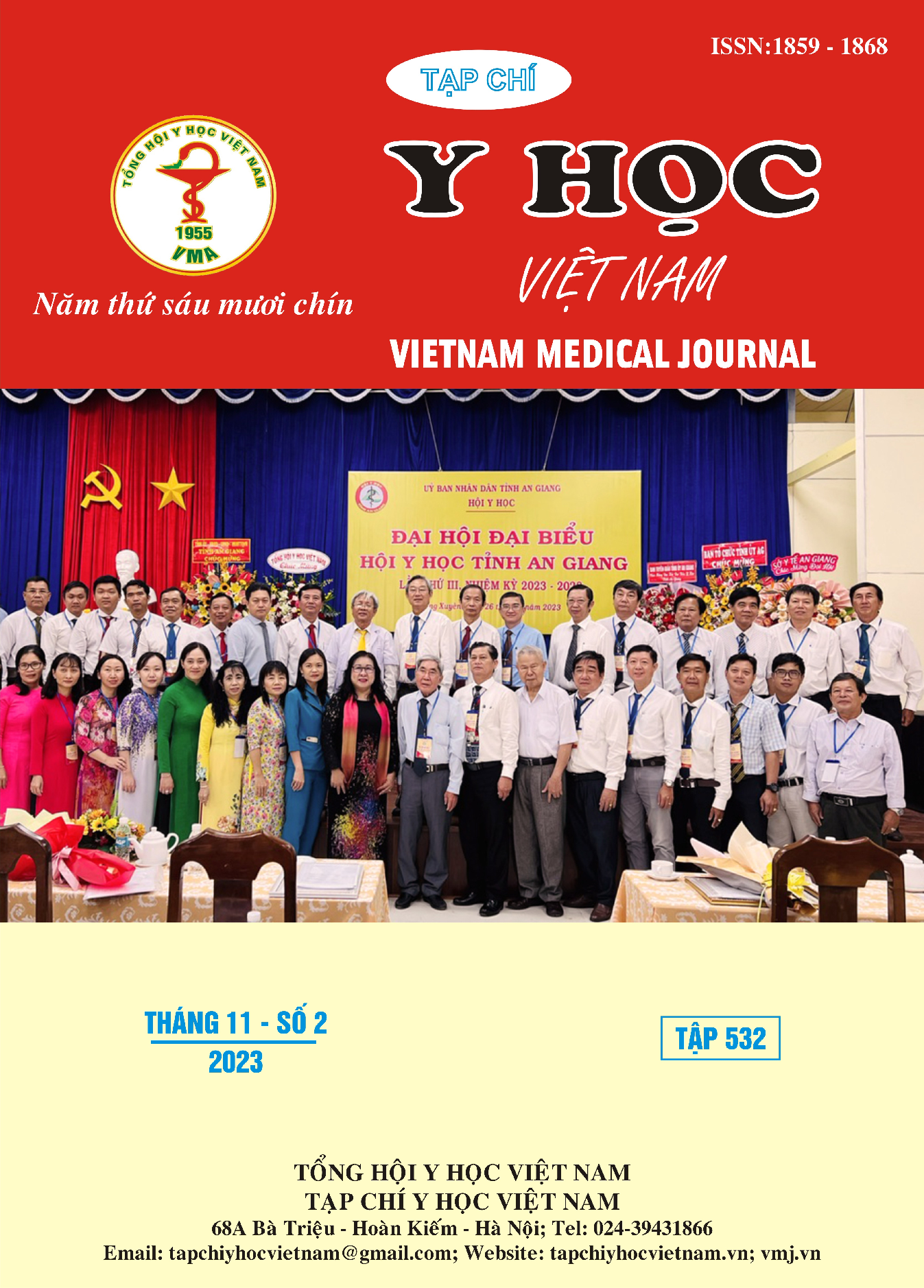DEVELOPMENT AND VALIDATION OF HPLC-DAD METHOD FOR SIMULTANEOUS DETERMINATION OF SEVEN ADDITIVES IN FOODS
Main Article Content
Abstract
Background: Preservatives and sweeteners are commonly used in the food technology industry. However, if additives are used improperly, they can cause harmful health effects such as birth defects, risk of developing cancer, causing intestinal toxicity, promoting weight gain and type 2 diabetes. Objectives: 1. Develop and validate a process for quantifying additives: preservatives (sodium benzoate
potassium sorbate) and sweeteners (acesulfame K, aspartame, saccharin, alitam, neotam) using the method HPLC – PDA. 2. Apply the process to analyze additives in food samples. Subjects and methods: Groups of preservatives (sodium benzoate, potassium sorbate) and sweeteners (acesulfame K, aspartame, saccharin, alitam, neotam) in samples of cakes and pork rolls on the market were quantified simultaneously by using HPLC-PDA method. Results: Chromatography conditions: Kromasil C18 column (150mm× 4.6mm; 5µm); mobile phase: Methanol: 0.02M NaH2PO4 buffer (pH 3.5) according to gradient program, analysis wavelength 220 nm, flow rate: 1 mL/min, column temperature 30oC, injection volume:
20 μL. The procedure was validated with method recoveries of 80–110% and RSDs in the range of 0.12–5.46%, LOD and LOQ values of 0.8–10 µg/mL and 2.6 -34 µg/mL, respectively. Conclusion: Developed a process to simultaneously quantify 7 additives in food. The method has been successfully quantitatively applied on 23 cake samples and 18 pork sausage samples on the market.
Article Details
Keywords
HPLC-PDA, preservative, sweetener
References
tháng 08 năm 2019 quy định mức sử dụng tối đa
phụ gia trong thực phẩm. 2019.
2. AOAC. Appendix K: Guidelines for Dietary Supplements and Botanicals. 2019.
3. Feingold B.F. Food additives and child development. Hospital Practise. 1973; 21 (11–12), pp. 17–1.
4. Fatma Turak, et al. PLS-UV Spectrophotometric Method for the Simultaneous Determination of Ternary Mixture of Sweeteners (Aspartame, Acesulfame-K and Saccharin) in Commercial Products. Innovations in Chemical Biology. 2009; pp.305-311.
5. Rohmah, S. A. A., Muadifah, et al. Validasi Metode Penetapan Kadar Pengawet Natrium Benzoat pada Sari Kedelai di Beberapa Kecamatan di Kabupaten Tulungagung Menggunakan Spektrofotometer Uv-Vis. Jurnal Sains dan
Kesehatan. 2011; 3(2), pp. 120-127.
6. Tungkijanansin, N., Alahmad, W., Nhujak, T., et al. Simultaneous determination of benzoic acid, sorbic acid, and propionic acid in fermented food by headspace solid-phase microextraction followed by GC-FID. Food chemistry. 2020; 329, pp.127-161.
7. Tuormaa T.E. The adverse effects of food additives on health: a review of the literature with special emphasis on childhood hyperactivity. Journal of Orthomolecular Medicine. 1994; 9, pp. 225–243.
8. Zengin N., Yüzbas ıog˘lu D., Ünal F., Yılmaz S., Aksoy H. The evaluation of the genotoxicity of two food preservatives: Sodium benzoate and potassium benzoate. Food and Chemical Toxicology. 2011; 49, pp. 763 – 769.


